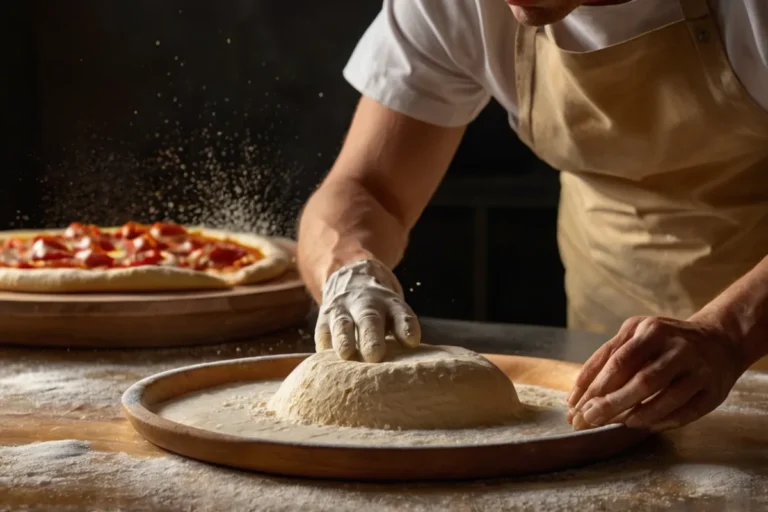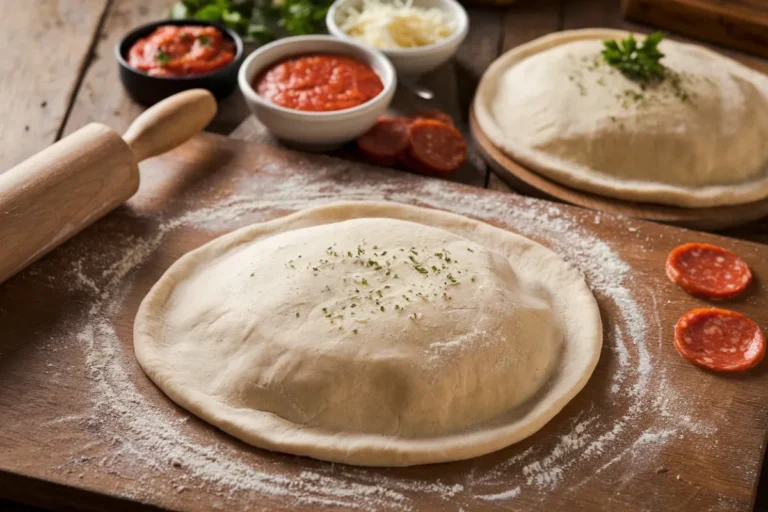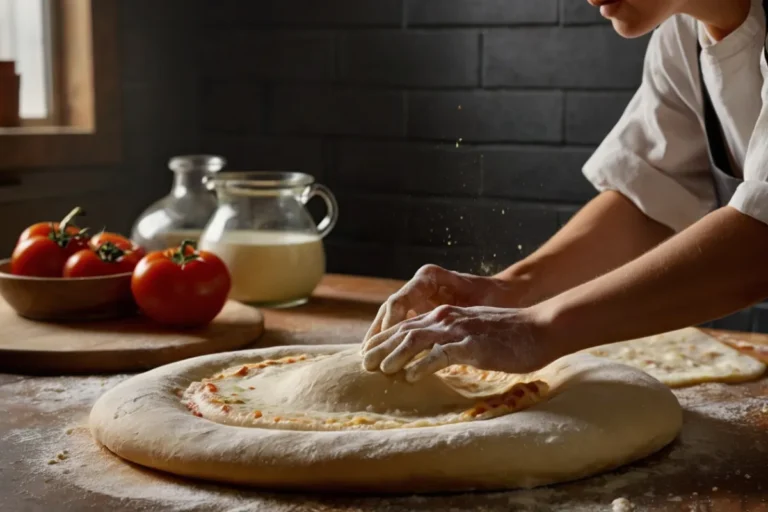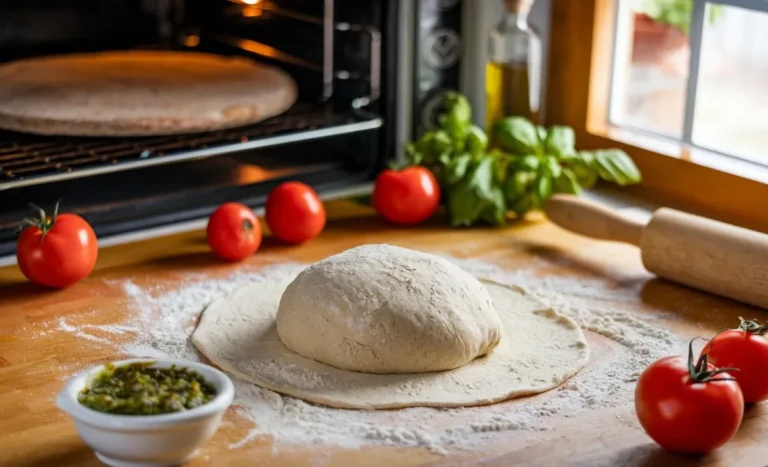How to Master the Poolish Pizza Dough Recipe for Perfect Crust Every Time
How to Master the Poolish Pizza Dough Recipe for Perfect Crust Every Time
There’s something magical about the perfect pizza crust—crispy, chewy, and flavorful. But getting that restaurant-quality crust at home can feel challenging, especially if you’ve only ever used traditional dough recipes. That’s where the poolish pizza dough recipe comes in. Poolish, a type of pre-ferment, takes pizza dough to the next level by adding depth of flavor and a delightfully chewy texture. The great news is that with a few simple steps, you can master the art of creating poolish pizza dough and achieve a perfect crust every time. In this guide, we’ll break down every step and explain the benefits of using poolish so that you can bake like a pro in no time.
1. What is Poolish Pizza Dough and Why Should You Use It?
If you’re used to making pizza dough with only flour, water, yeast, and salt, the poolish method may sound unfamiliar. So, what exactly is poolish, and why is it worth the effort?
Poolish is a pre-ferment made from equal parts flour and water with a tiny amount of yeast. This simple combination is left to ferment for several hours or even overnight, allowing it to develop a rich, complex flavor. When mixed with the rest of your dough ingredients, poolish imparts its unique characteristics to the dough, resulting in a pizza crust that’s crispy, chewy, and full of flavor.
The biggest advantage of using poolish in your pizza dough recipe is the flavor. The extended fermentation time allows the yeast to develop more nuanced flavors, and the pre-ferment helps enhance the dough’s elasticity, making it easier to stretch and shape. With poolish, you get a pizza crust that’s both flavorful and easier to work with—what’s not to love?
2. The Benefits of Using Poolish for Pizza Dough
When you incorporate poolish into your pizza dough, you’re adding more than just flavor. Here are some of the key benefits of using poolish:
2.1 Improved Flavor
The long fermentation time allows the yeast in the poolish to work its magic, producing a complex, tangy flavor in the dough. This means you’ll taste more than just flour and yeast—it’s a deeper, more sophisticated flavor that will elevate your pizza.
2.2 Crispier Crust
Because the dough is fermented longer, the gluten in the flour develops more fully, leading to a crisper and airier texture in the crust. That golden-brown crunch is a hallmark of a well-made pizza dough, and poolish ensures you get just that.
2.3 Easier to Stretch
If you’ve ever struggled to stretch pizza dough without tearing it, you’ll appreciate the elasticity that poolish provides. The pre-ferment strengthens the dough, making it more pliable and easier to stretch into your desired shape.
2.4 Better Gluten Development
The fermentation process helps develop the gluten structure, which gives your dough that perfect chewy texture. The dough becomes easier to work with and holds its shape better when baked.
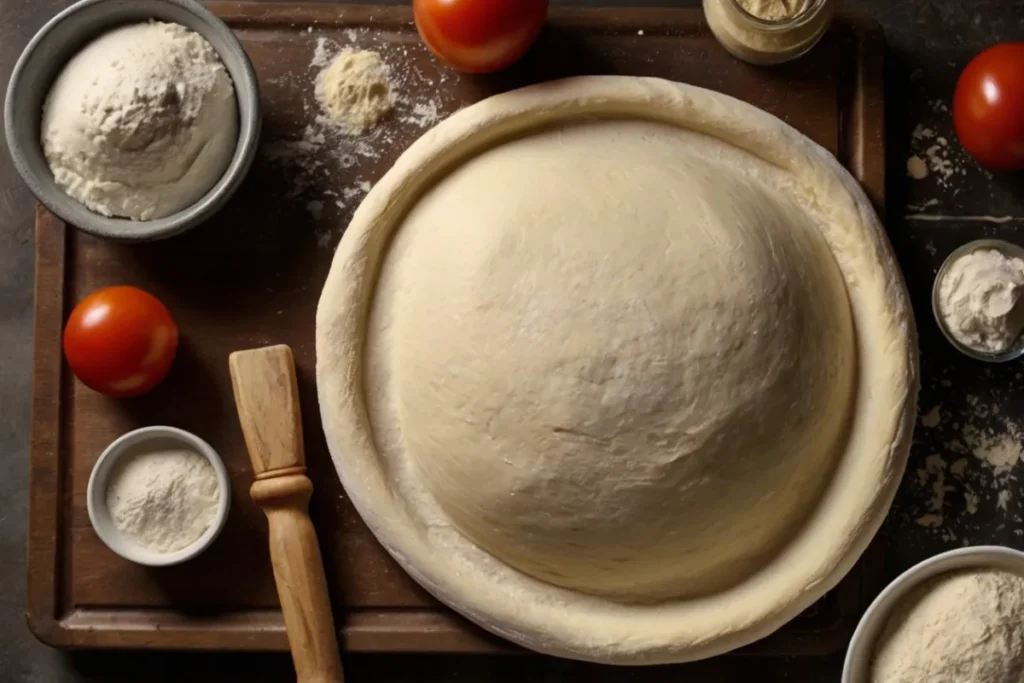
3. Essential Ingredients for the Poolish Pizza Dough Recipe
Creating the perfect poolish pizza dough requires just a few key ingredients. Here’s a breakdown of what you’ll need:
| Ingredient | Amount | Purpose |
|---|---|---|
| All-purpose flour | 500g | Main ingredient for structure |
| Water | 300ml | Hydrates flour for dough formation |
| Active dry yeast | 5g | Fermentation and flavor development |
| Salt | 10g | Balances flavor and yeast activity |
| Olive oil | 20g | Adds tenderness to the dough |
Each of these ingredients plays a crucial role in creating dough that’s not only flavorful but also easy to shape and bake. While you can experiment with different flours or oils, sticking to the basics will give you the best results.
4. Step-by-Step Instructions for Creating Poolish
Now that you know what goes into your dough, it’s time to make the poolish and turn it into pizza dough. Follow these steps, and you’ll be well on your way to making pizza dough that rivals your favorite pizzeria.
4.1 How to Make Poolish
- In a bowl, combine 250g of flour with 250ml of water and a pinch of yeast (roughly 0.5g). Stir until the mixture forms a smooth paste.
- Cover the bowl with a damp cloth or plastic wrap and let it sit at room temperature for 12 to 16 hours. This allows the yeast to ferment the mixture and develop its flavors. You’ll know the poolish is ready when it bubbles and has a slightly tangy smell.
4.2 Mixing the Pizza Dough
- Once your poolish is ready, add the remaining 250g of flour, 50ml of water, 10g of salt, and 20g of olive oil to the poolish.
- Mix everything together until a rough dough forms, then knead the dough on a floured surface for about 8-10 minutes or until it becomes smooth and elastic. The dough should be soft but not sticky.
- If the dough is too sticky, add a little more flour, but be careful not to add too much.
4.3 First Rise and Resting Time
Place the dough in a lightly oiled bowl, cover it with a cloth, and let it rise for 1 to 2 hours or until it has doubled in size. This rise gives the dough time to develop its texture and flavor further.
4.4 Punching Down and Shaping the Dough
Once the dough has risen, gently punch it down to release the air and divide it into two equal portions for two medium pizzas (or more for smaller pizzas). Allow the dough to rest for about 30 minutes before shaping it. This resting period helps the dough relax and makes it easier to stretch without tearing.
When ready, stretch or roll the dough into your desired pizza shape. Avoid using a rolling pin if possible, as stretching the dough by hand preserves its airy texture.
5. How to Achieve the Perfect Crust Using Poolish Pizza Dough
The right baking techniques are key to achieving a crisp, golden crust. Here are some tips to ensure your pizza crust comes out perfect:
5.1 Preheat Your Oven
Preheat your oven to 450°F (230°C) or higher. The high heat helps the dough cook quickly, creating a crispy exterior while keeping the inside tender and chewy.
5.2 Use a Pizza Stone or Steel
If possible, use a pizza stone or pizza steel to bake your pizza. These tools retain heat well and help create a crispier crust by evenly distributing heat throughout the pizza.
5.3 Baking Time
Place your pizza in the oven and bake it for about 10-12 minutes, or until the crust is golden brown and the cheese is bubbling. Keep an eye on it to avoid over-baking, as pizza crusts can go from perfect to overdone quickly.
6. Troubleshooting Common Poolish Pizza Dough Issues
Even the most experienced bakers face challenges sometimes. Here are a few common problems you might encounter and how to solve them:
6.1 Dough Too Sticky
If your dough is too sticky, it could be because you added too much water or didn’t knead the dough long enough. Try adding small amounts of flour until the dough becomes smooth and easy to handle.
6.2 Dense Crust
A dense crust usually means that the dough wasn’t fermented long enough. Make sure you give the poolish enough time to ferment, as well as allowing the dough to rise properly. Over-kneading the dough can also result in a denser crust.
6.3 Dough Not Rising
If your dough doesn’t rise, the yeast might not be active. Ensure that your yeast is fresh and that your environment is warm enough for the fermentation process. Yeast thrives at temperatures between 75°F and 80°F (24°C – 27°C).
7. Poolish Pizza Dough Variations for Different Crust Styles
Once you’ve perfected your basic poolish pizza dough, feel free to experiment with different variations to suit your taste.
7.1 Thick vs. Thin Crust
Adjust the amount of dough you use and the thickness of the base to create either a thicker, chewier crust or a thin, crispy crust. For a thinner crust, roll the dough out more, and for a thicker crust, leave the dough portions slightly larger.
7.2 Whole Wheat Poolish Dough
For a healthier, more rustic option, substitute some of the white flour for whole wheat flour. This will give your dough a nutty flavor and a denser texture.
7.3 Gluten-Free Poolish Pizza Dough
Although challenging, you can make a gluten-free version of poolish pizza dough by using gluten-free flour blends. Keep in mind that gluten-free dough behaves differently and may need additional adjustments to maintain the right consistency.
8. Poolish Pizza Dough Toppings: Pairing the Perfect Ingredients
The flavor and texture of your poolish pizza dough complement a wide variety of toppings. Here are some classic and creative ideas:
- Margherita Pizza: A simple combination of fresh mozzarella, tomatoes, and basil.
- Pepperoni Pizza: A favorite, with spicy pepperoni and a generous amount of cheese.
- Vegetarian Pizza: Top with roasted vegetables like bell peppers, onions, mushrooms, and olives.
- Gourmet Pizzas: Try toppings like prosciutto, arugula, goat cheese, or truffle oil for an elevated pizza experience.
9. Conclusion: Enjoy Your Homemade Poolish Pizza
By using poolish, you’re adding a special touch to your pizza dough that results in an unforgettable crust. With a little patience and practice, you’ll soon be able to create pizza dough that rivals your favorite pizzeria. Remember, the key to a perfect poolish pizza dough is allowing the ingredients to ferment and develop flavors over time. Once you’ve mastered this technique, the possibilities are endless.
Now that you know how to make poolish pizza dough, it’s time to give it a try. Grab your ingredients, set aside some time for the fermentation process, and get ready to enjoy pizza perfection right from your own kitchen. Happy baking!
Ready to create your own poolish pizza dough? Give it a try today and experience pizza like never before!


